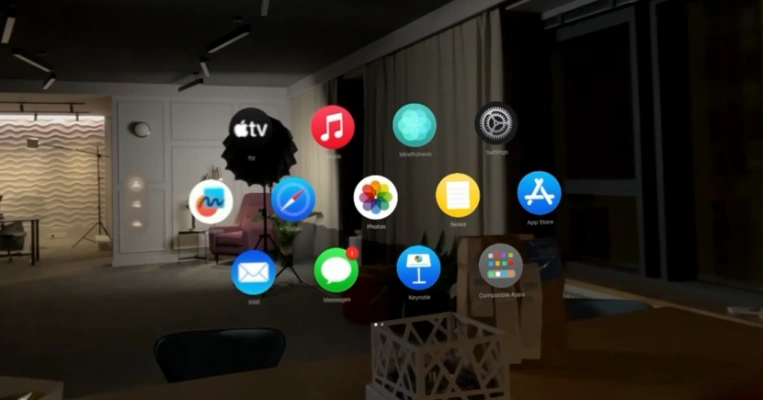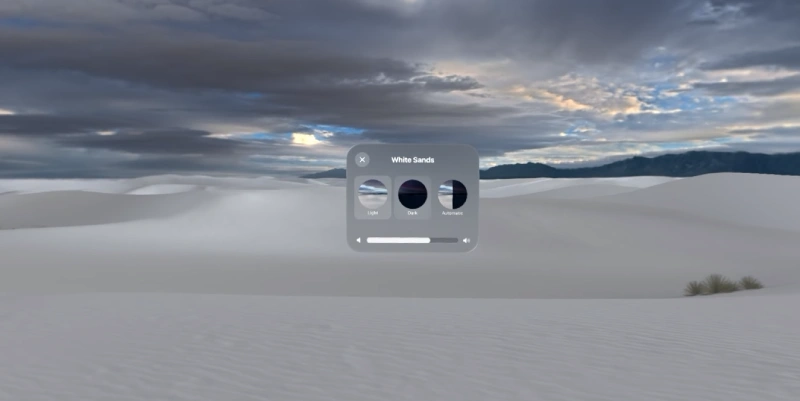VisionOS, developed exclusively for Vision Pro, represents Apple’s attempt to create an operating system specifically designed for VR environments. VisionOS sets a new standard for VR operating systems: its intuitive design makes navigation and control natural.
Description visionOS
VisionOS, the operating system developed for Apple’s Vision Pro VR headset. Key to its design is the rounding of windows and icons – this is done to keep the user’s eye from clinging, making it easier to navigate the virtual space.
The interface is minimalist and semi-transparent, ensuring that it is clutter-free and emphasizes core functions without unnecessary burden. This design style is reflected in the main menu, which is clean and streamlined, deliberately avoiding unnecessary elements that could distract the user’s attention.

For those familiar with Apple’s ecosystem, navigating VisionOS will feel natural. The system includes familiar interface elements such as control menus, tool windows and resizable app sliders, all presented in a sleek frosted glass design. Instead of the traditional dark mode, windows in VisionOS intelligently adjust to ambient light, enhancing visual comfort.
One of the ingenious features of VisionOS is the integration of iPhone and iPad apps as 2D panels that can be run on virtual displays in a VR environment. This approach not only instantly expands the available library of apps, but also facilitates a smooth transition of current Apple users into the realm of virtual reality.

Apps on visionOS
Currently, the choice of fully 3D applications adapted for VisionOS is somewhat limited. However, given the growing interest in and proliferation of Vision Pro, we can expect a surge in the development of such applications in the near future. As noted earlier, a significant number of iPhone and iPad apps have been adapted for use in VisionOS. These are essentially the same apps you would normally use on an iPad or iPhone, but they have been reimagined and projected into virtual space for use in Vision Pro. Many of these adapted apps are already in the App Store.
What are visionOS unique features?
VisionOS introduces several standout features designed to enhance user experience and convenience. One notable innovation is the implementation of virtual avatars. During the initial setup of the Vision Pro headset, VisionOS conducts a scan to create a personalized 3D avatar, primarily used for video calls and virtual conferences. While the current iteration of these avatars might lack realism and appear somewhat eerie, Apple is actively refining this feature. Recent updates, such as the introduction of hand tracking, demonstrate their ongoing improvements.
Another practical feature is the guest mode, which allows users to share the Vision Pro experience without compromising personal data. This mode facilitates a swift and temporary setup for another user, ensuring that personal settings and data remain intact and inaccessible to the guest. This feature is particularly useful for allowing friends or family to try out the Vision Pro.
Another noteworthy feature is the travel mode. In this mode, virtual windows are tethered to the headset’s orientation rather than a fixed point in the virtual space. This proves particularly useful during travel, such as on a train or plane, ensuring that virtual screens remain consistently in view regardless of physical movements. This innovative solution effectively addresses the common issue of screen “drift” in VR environments.




